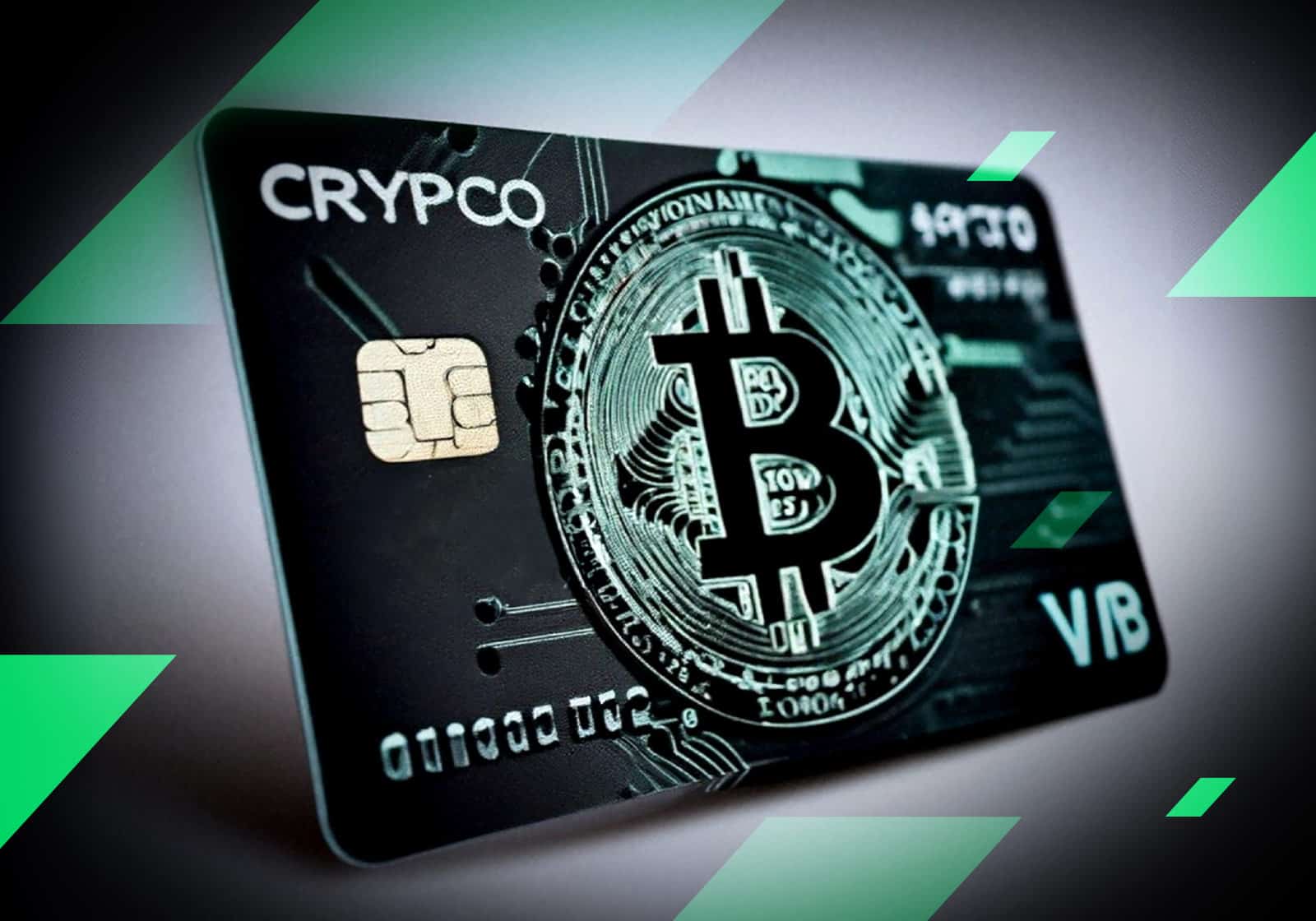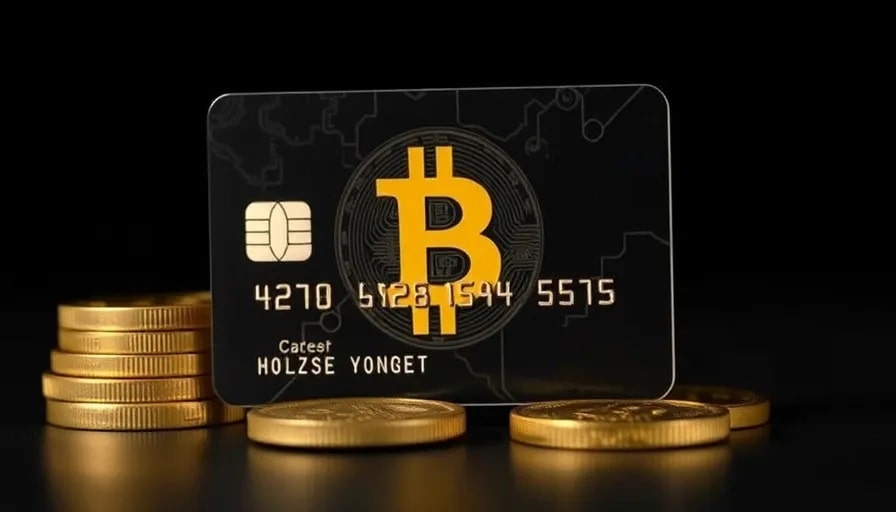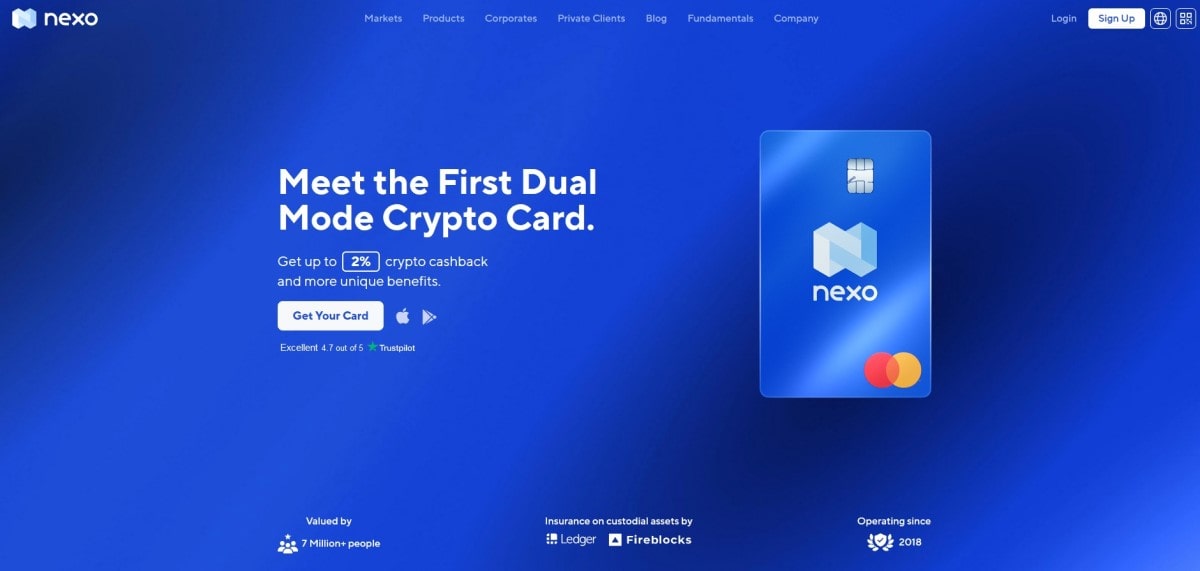Crypto Payment Cards: Spending Your Crypto Like Cash

As the popularity of cryptocurrencies continues to grow, so does the need for practical ways to use them in everyday life. Crypto cards have emerged as a solution, allowing users to spend their cryptocurrency as easily as regular money, linking traditional finance to the crypto world. This article examines how these cards work, their advantages and potential drawbacks, how to choose and use one, and helps you understand how to integrate cryptocurrency into your daily financial activities.
What are crypto cards?
Crypto cards are a type of financial tool that allows users to spend their cryptocurrency holdings in a manner similar to traditional debit or credit cards. These cards bridge the gap between crypto assets and traditional financial systems by facilitating the conversion of cryptocurrencies into fiat currencies (such as USD, EUR, or GBP) at the point of sale. This enables users to make purchases at merchants and withdraw cash from ATMs that accept standard payment cards, thereby integrating cryptocurrencies into everyday financial transactions.

How crypto cards work
Crypto payment cards function by converting cryptocurrency into fiat currency at the time of transaction. When a cardholder makes a purchase or withdrawal, the equivalent value of the cryptocurrency is calculated in real time based on the current exchange rate. The transaction process typically involves the following steps:
- Transaction initiation. When a user makes a purchase or ATM withdrawal using a crypto payment card, the card system checks the balance of the associated crypto wallet.
- Exchange rate determination. The card provider determines the current exchange rate for the specific cryptocurrency being used.
- Real-time conversion. The required amount of cryptocurrency is automatically deducted from the user's linked crypto wallet or preloaded balance. This amount is then converted into the fiat currency accepted by the merchant or ATM.
- Transaction completion. The converted fiat currency is transferred through the card network (such as Visa or Mastercard) to the merchant or dispensed as cash, completing the transaction. The cardholder's cryptocurrency balance is updated, and the transaction is recorded in both the crypto wallet and the fiat account associated with the card.
- Transaction fees. Depending on the card provider, a fee may be charged for the conversion.
This process enables crypto cards to function seamlessly within existing financial infrastructures, allowing for widespread acceptance and usage.
Types of crypto cards
There are three main types of crypto payment cards available.
Crypto debit cards
These cards are directly linked to your cryptocurrency wallet. They operate much like traditional debit cards, which means that funds can be withdrawn as needed for transactions.
Crypto debit cards provide flexibility and convenience, as users can spend their cryptocurrencies directly without needing to manually convert them beforehand. This type of card is ideal for those who frequently use their crypto assets for everyday purchases.
Crypto credit cards
Credit crypto cards are a relatively new concept that combines the features of traditional credit cards with the benefits of cryptocurrencies. Like traditional credit cards, crypto credit cards provide users with a credit line in fiat currency. Users can make purchases up to the limit of their credit line, and the balance is settled later. To obtain a credit crypto card, users may need to provide cryptocurrency as collateral. The value of the collateral can determine the credit limit and interest rates offered by the card provider.
Credit crypto cards allow users to leverage their cryptocurrency holdings without liquidating them, preserving the potential for future appreciation. Additionally, some cards offer rewards in the form of cryptocurrency, adding an incentive for users to choose this option.

Prepaid crypto cards
Prepaid crypto cards allow users to load a specific amount of cryptocurrency onto the card, which is then converted into a selected fiat currency. The loaded funds can be spent anywhere the card is accepted until the balance is exhausted, similar to traditional prepaid debit cards.
The spending limit on a prepaid crypto card is determined by the amount of currency that has been preloaded onto the card. Once the balance is exhausted, the user must reload the card to continue making purchases.
Prepaid crypto cards offer users control over their spending, as they can only spend what has been preloaded onto the card. This makes them ideal for budgeting and avoiding overspending.
Advantages of crypto cards
Crypto payment cards offer a range of benefits that make them an attractive option for individuals looking to integrate their cryptocurrency holdings into their daily financial lives.
Convenience
One of the most significant advantages of crypto cards is the convenience they provide. By allowing users to spend their cryptocurrencies directly, these cards eliminate the need for complex wallet addresses, lengthy transaction confirmations, and the hassle of pre-converting crypto to fiat currencies. With a crypto card, making purchases, paying bills, or withdrawing cash is as simple and straightforward as using a traditional debit or credit card. Even virtual crypto cards, which exist only in digital form, can be used to buy things online with crypto.
Global accessibility
Crypto cards offer unparalleled global accessibility. Whether you're travelling abroad or making an online purchase from a different country, you can use your crypto card just like any other card without having to worry about high currency exchange fees or the limitations of traditional banking systems. The real-time conversion of cryptocurrencies to the local currency at the point of sale means you can transact seamlessly anywhere Visa, Mastercard or other major card networks are accepted.
Additional features and benefits
Many crypto card providers offer additional features and rewards that further enhance their appeal. These can include:
- Cashback programmes. Some cards offer cashback rewards in cryptocurrencies for every purchase made, providing an incentive to use the card regularly.
- Lower fees for international transactions. Traditional cards often charge hefty fees for foreign transactions. In contrast, some crypto cards offer lower fees, which makes them a cost-effective option for use abroad.
- Staking and rewards. Certain cards allow users to earn interest or staking rewards on their cryptocurrency balances by leaving funds in the linked wallet.
Limitations and risks
While crypto cards offer numerous benefits, they also come with a set of limitations and risks that users should carefully consider before incorporating them into their financial routines.
Volatility of cryptocurrency values
Cryptocurrencies are known for their rapid and sometimes extreme price fluctuations. When using a crypto card, the value of the cryptocurrency being spent can change significantly from the time it is loaded onto the card to the moment of the transaction. This can lead to spending more or less cryptocurrency than initially anticipated, potentially resulting in financial losses.
Fees and costs
Crypto cards can come with a variety of fees, including:
- Transaction fees. Fees are charged for each purchase or ATM withdrawal, which can be higher than those for traditional cards.
- Conversion fees. Each time cryptocurrency is converted to fiat currency, users may be charged a conversion fee.
- Maintenance fees. Some crypto cards come with monthly or annual maintenance fees, which can erode the card's benefits, particularly if the card is not used frequently.
Tax implications
The tax treatment of cryptocurrency transactions varies by country, and using a crypto card could trigger taxable events. Users must be aware of the tax implications of their transactions, including capital gains taxes on converted cryptocurrency, which can complicate tax reporting and increase tax liability.
Geographical restrictions
The availability of crypto cards is often limited to specific regions or countries. Additionally, some cards may have restrictions on where they can be used internationally, which limits their functionality for travellers or global users.
Withdrawal and spending limits
Many crypto cards impose daily or monthly limits on withdrawals and spending. These limits can be restrictive for users looking to make large purchases or withdraw significant amounts of cash, reducing the card's utility in certain situations.
Loss of privacy
While cryptocurrencies offer a higher degree of privacy compared to traditional financial systems, using a crypto card will compromise this advantage.
- KYC and AML requirements. To comply with Know Your Customer (KYC) and Anti-Money Laundering (AML) regulations, most crypto card providers require users to verify their identity by submitting personal information. This process typically includes providing copies of identification documents, proof of address, and other sensitive data.
- Transaction tracking. When using a crypto card, transactions are processed through traditional financial networks like Visa or Mastercard, which track and record transaction details. This data can be shared with third parties, including government agencies, as part of regulatory compliance. As a result, the privacy of users' spending habits may be compromised, contrasting with the relative anonymity of on-chain cryptocurrency transactions.
- Data security risks. The collection and storage of personal data by card providers introduce additional risks, such as data breaches or unauthorised access. If a provider's database is compromised, users' personal information and transaction history can be exposed, and it can lead to potential privacy violations or identity theft.
How to choose the right crypto card
Choosing the right crypto card involves several key considerations to make sure it aligns with your financial goals and usage preferences.
Assessing your needs and usage patterns
Before choosing a crypto card, it's important to understand your own needs and how you plan to use the card.
- Frequency of use. Consider how often you will use the card. If you plan to use it frequently for everyday purchases, you might prioritise cards with lower transaction fees, high daily limits and better rewards programmes. For occasional use, other factors like ease of reloading and low maintenance fees might be more critical.
- Spending habits. Evaluate whether you primarily spend in your home country or internationally. Some cards offer better exchange rates or waive foreign transaction fees, which makes them more suitable for international travellers.
- Cryptocurrency type. Determine which cryptocurrencies you want to spend. Choose a card that supports the specific crypto assets you hold.
Key factors to consider
Once you've evaluated your specific needs, consider the following factors when comparing different crypto cards.
Fees and costs
- Conversion fees. Look for cards that offer competitive conversion fees, especially if you plan to make frequent transactions.
- ATM withdrawal fees. If you expect to use the card for cash withdrawals, compare the ATM fees associated with different cards. Some cards may offer a limited number of free withdrawals per month, while others might charge higher fees for each transaction.
- Maintenance and inactivity fees. Check if the card has monthly or annual maintenance fees. Also, consider any inactivity fees that might be charged if you don't use the card regularly. These fees can add up over time and reduce the card's overall value.
Security features
- Two-factor authentication (2FA). Ensure the card provider offers robust security features like 2FA to protect your account from unauthorised access. This adds an extra layer of protection beyond just a password.
- Card freezing and spending limits. Some cards allow you to set spending limits or freeze the card through an app, providing additional control over your funds. This feature is particularly useful if you lose your card or suspect unauthorised use.
- Insurance and guarantees. Some card providers offer insurance or guarantees for losses incurred due to fraud or theft.
Geographical availability
- Regional restrictions. Ensure that the card you choose is available in your country or region. Some cards might only be issued in certain countries or have limitations on where they can be used.
- International usability. If you plan to travel or make international purchases, verify that the card is accepted globally and that it offers favourable terms for foreign transactions.
Rewards and incentives
- Crypto cashback. Many crypto cards offer rewards programmes, such as crypto cashback on purchases. Evaluate the percentage of cashback offered, the types of purchases that qualify, and the cryptocurrencies in which rewards are paid.
- Loyalty programmes: Some cards are linked to loyalty programmes that provide additional benefits, such as discounts at partner merchants or tiered rewards based on card usage.
- Staking rewards. Some cards offer additional rewards if you stake the card issuer's native cryptocurrency. Staking can provide benefits like higher cashback rates or reduced fees. However, consider the risks associated with staking, such as potential cryptocurrency value fluctuations.
Card issuer reputation
- User reviews and ratings. Research user reviews and ratings to gauge the experiences of other customers. This can provide insights into the card issuer's customer service quality, the reliability of the card, and any potential issues.
- Customer support. Evaluate the quality of customer support. Consider whether the provider offers 24/7 support, the responsiveness of their service, and the availability of multiple support channels.
How to use cryptocurrency cards

So, what do you need to do to use your crypto wallet like a bank account with a debit card? Obtaining a crypto card is a straightforward process. Once you've selected a card, visit the provider's website or download their app to create an account. This process typically requires providing your personal information, verifying your identity (KYC process), and linking your cryptocurrency wallet.
After completing the KYC process, you can formally apply for the card. Some providers may issue the card instantly in digital form, while others may send a physical card to your address. If you've received a physical card, you'll likely need to activate it before use. This can usually be done via the provider's app or website.
To protect your funds, enable security features such as two-factor authentication (2FA), transaction alerts, and card freezing options.
Before using your card for larger purchases, consider making a small transaction to ensure everything is working correctly. This will help you familiarise yourself with the payment process and any associated fees.
Tags
Try our Bitcoin Cloud Miner and get additional crypto rewards based on your trading volume. It's immediately available upon registration.
Try our Bitcoin Cloud Miner and get additional crypto rewards based on your trading volume. It's immediately available upon registration.
FAQ
Where can I use a Visa or Mastercard crypto card?
Anywhere that accepts cards from these networks.
Do anonymous crypto cards exist?
No, all crypto card providers require identity verification.
Can crypto cards be used to withdraw cash from ATMs?
Yes, you can cash out cryptocurrency at any ATM that accepts cards from this network. The conversion is done at the current market price.



